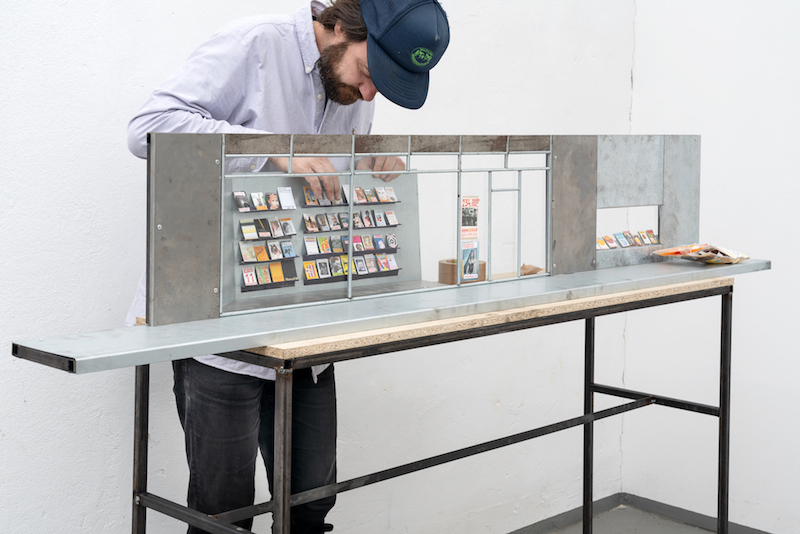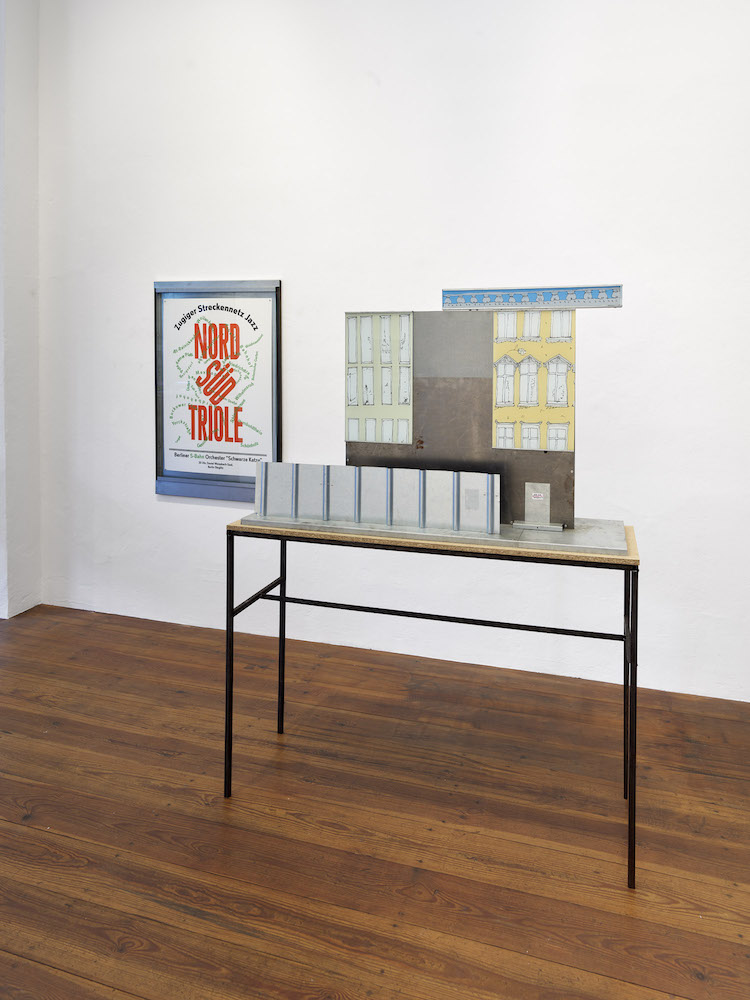


Wilhelm Klotzek
Katzen & Architektur
For Gallery Weekend Berlin 2020
September 12 to November 7, 2020
Open by Appointment
Potsdamer Str. 97, 10785 Berlin
For Gallery Weekend Berlin
Sept 12 to 13, 2020, 12am – 7pm
Click the button below to load the video from onedrive.live.com.
For his first solo exhibition at Klosterfelde Edition, Wilhelm Klotzek devotes himself once again to the calamities and peculiarities of life, art, and architecture—condensed theatrically into scenes of contemporary lunacy that can only be endured with a healthy dose of humor.
In Katzen & Architektur (Cats & Architecture) he satirizes current as well as peripheral themes with three new sculptures in the form of architectural models: a fragment of the north and east facades of the Humboldt Forum at the Berlin Palace including a construction fence, an unwelcoming staff entrance, a combative Verdi trade union poster, and a lurid advertising for a “Hans Klok Magic-Cheese Show” at the Schlüterhof on the Day of German Unity demonstrate the entire hopelessness surrounding the planning and building of this new Berlin headline architecture. For the artist it was the sculptural solution to a discursive problem—following discussions with Kasper König on dealing with architecture in public space, Klotzek was invited to voice his views in a public debate on the construction of the new Museum der Moderne and the problems associated with it:
“I was paralyzed or better said: I was absolutely overwhelmed. What did I have to do with all the arguing about the budget, preeminent museum buildings, and the sensibilities of cultural movers and shakers? I couldn’t get the topic out of my head: these personal urban-planning feuds, the architectural hallucinations of politicians that had come true, large-scale plans upended by tiny failures, were topics I grew up with here in Berlin that affected me directly and had actually always preoccupied me. The architectures that had been thrown up in urban space as thoroughly statesmanlike historical gestures frequently turned out to be the result of short-sighted and subjective decisions by those in charge. The supposed “big win for the good of the community” was in reality quite trivial: who quarrels with whom? Which foundation has which connections? Berlin as a playground for petty-bourgeois lobbyism.”
The second model reproduces an already historic, filthy corner of a sub-level inside the Potsdamer Platz U + S-Bahn station—years of water damage badly affects the former ‘90s glass-and-steel-chic prestige project: water pours through a five-square-meter hole in the ceiling onto the granite floor and, says Klotzek, “has already revealed several beautiful calcification patterns (unless various mopping buckets were there to collect the water).”
As part of preparations for a presentation of work in the front display window of the Walther König bookstore in Cologne, Klotzek made a larger model of the façade out of sheet metal/glass that ultimately became a stand-alone work. Filled with a personal librairie imaginaire[1] of book titles such as Malerei vorgestern (Painting Yesterday), Sculpture Tomorrow, or the 800-page anthology Tassen in der Kunst (Cups in Art)—all spoofs on various clichés of art-publishing jargon, he also includes current, desired-after titles such as Chris Dercon’s biography: Volksbühne—How it Really Was …
The illustrative, miniature-like quality of the models—underscored in the palace model via the use of color and a comic-like drawing style that indicates windows, chandeliers, and visitors—contrasts with the austerely constructed, raw-steel pedestals and the materiality of models made of bent and at times rusty sheet metal. The backsides of the models resemble minimal sculptures, while the narratives take place in front. Architectural models typically represent idealized projections into the future; Klotzek’s models by contrast are dedicated to existing or soon-to-be-anticipated grievances: the plaster is already crumbling on the palace facade even though the construction site is still in full swing.
Rounding out the exhibition are posters; one announces a “Kinder Surprise Egg Fair” at the Humboldt Forum (usually the low point in a building’s career of uses it serves), while another provides the exhibition its title: based on a poster popular with certain bookshops, the cryptic design combines the photo of a grimy street food corner with the slogan “You can do without a lot in life, but not cats and architecture!”—to some extent a positive trivialization that declares architecture both an essential and approachable phenomenon.
Text by Bettina Klein
Translation by Erik Smith
[1] The “imaginary bookstore,” in reference to André Malraux’s concept of a musée imaginaire.
Wilhelm Klotzek (*1980, East Berlin) lives and works in Berlin. His last solo shows, inter alia, were, “Der Pudding der Apocalypse” (2019), Galerie Tobias Naehring, Leipzig; “Donationsdystopien” (2017), Institut für Kunst und Kontext, Berlin; as well as “Fast nur Haut, Margarine” (2017), Memphis, Linz.
